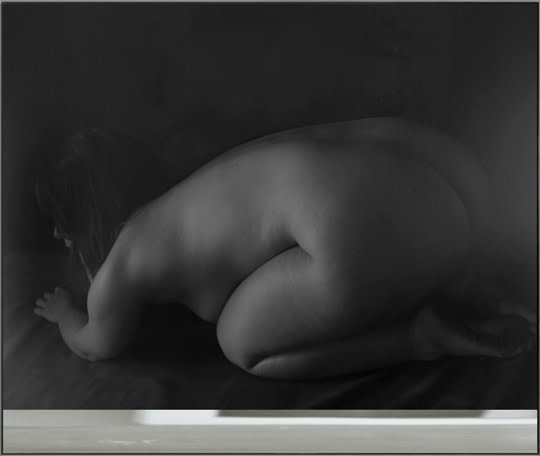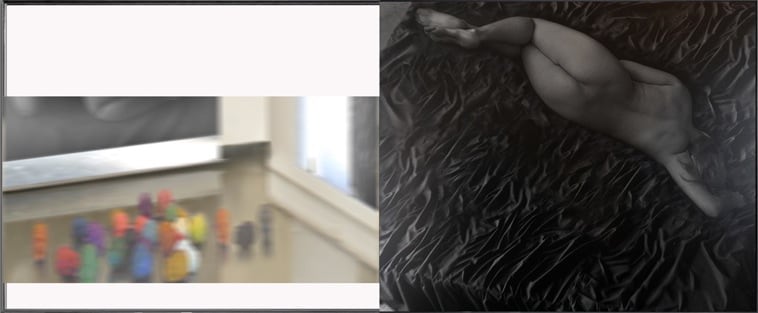Stux Gallery, NY is pleased to present “Standing on The Edge: post-digital paintings” a solo exhibition of recent works by Shimon Okshteyn.
Shimon Okshtyeyn’s “Standing on the Edge” is a multidimensional exploration of a state of mind where contradiction reigns. This exhibition captures the unusually stimulating visual world of Okshteyn’s practice, marked by fastidious craftsmanship, strong compositional formats and unusual mixtures of materials, all leading to an inner world whose range is as complex as it is unpredictable and varied. His well-informed appropriationist tendencies are abetted by the artist’s urge towards classical traditions that balance gloomy introspection against outward looking strength. Added to this a coherent yet surprising use of thematic materials, a richness of invention, and a systematized build-up of narrative—all of these aspects make Okshteyn’s work irresistibly attractive to the eye. This narrative is but one connective thread in Okshteyn’s rigorously conceptual art, which simultaneously embraces and critiques the interplay between the real, the symbolic and the imaginary. His use of photographic images is never merely copies of the already available. Instead, they extract a kind of photographic unconscious from the image, bringing to the fore suppressed truths about its meaning and its making. As influential curator/critic Douglas Crimp noted in his historical essay Pictures, “…underneath each picture is always another picture.”
The paintings in this exhibition are structured as pictorial compositions whose realism is given new meanings by the mirror panels installed in the same frame, creating a highly subjective space marked by tension and melancholy. The layered and atmospheric surfaces reveal the poetry of Okshteyn’s process. Silent and still, they nevertheless push the mind to look beyond its physical contours and envision vast landscapes, an ever-elusive horizon line chased by high-octane dreams.
Painted over photographic images taken by the artist himself, Okshteyn, as someone interested in the facts behind the fiction approaches his photographs as portraits. The girls depicted are real and completely complicit in their objectification. They have bought into the fantasy and willingly play their part in it. He neither condemns nor condones their amateur striptease for the camera but simply steals their images and claims them for his art. In the process, the pictures begin to reveal their models’ essential vulnerability. There is timidity and awkwardness to every pose. They are young women who seem desperate to please yet uncomfortable in their staged states of undress. Products of wet dreams, they reek of the normal.
Like the work of Mike Kelly, Charles Ray or Richard Prince, Okshteyn’s work in “Standing on the Edge” can be understood as an attempt to come to terms with his own maleness, however emboldened or diminished it may be. But Okshteyn does not limit himself to one gender. If his various female subjects are indeed surrogate self-portraits, “almost him” – then his actual self-portrait silicon heads littered across the gallery floor have to be read in tandem with the paintings of female nudes. These male and female types put into play the most made up tropes of masculinity and femininity, but the exaggeration is clearly performative. Okshteyn uses gender as a masquerade, freely shifting between roles.
“Standing on the Edge” offers the commentary about the power of images and the freedom we have to decide for ourselves what their agendas might be, provided that we could see past the lurid sensuality of the picture and take the opportunity to look beneath the surface.























